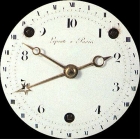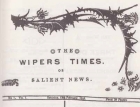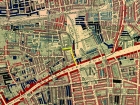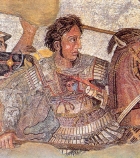Evidence
The use of sources within history lessons has consistently been included within the National Curriculum in England and as a specific assessment objective at GCSE and A-level, on the grounds that unless students know how claims about the past are generated and validated within the subject community, they will be poorly equipped to make sense of or to discriminate between conflicting claims about the past. While the use of sources depends on a process of critical evaluation, history teachers and curriculum designers are now very aware of the risks associated with reducing such evaluation to a series of mechanistic formulae in which ‘source work’ is detached from the enquiry process of answering specific and worthwhile questions about the past. The materials in this section help alert teachers to those risks as well as illuminating important misconceptions that may prevent students from developing a more powerful conception of the nature of historical knowledge The resources here offer a range of practical strategies, rooted in academic and practitioner research, for equipping students to use sources of many different kinds as evidence (rather than merely passing judgment on them). Read more
-

The teaching and learning of history for 15-16 year olds: have the Japanese anything to learn from the English experience
ArticleClick to view -

The use of sources in school history 1910-1998: a critical perspective
ArticleClick to view -

Time's arrows? Using a dartboard scaffold to understand historical action
ArticleClick to view -

Touching, feeling, smelling, and sensing history through objects
ArticleClick to view -

Transatlantic slavery – shaping the question, lengthening the narrative, broadening the meaning
ArticleClick to view -

Triumphs Show 141: using family photos to bring the diversity of Jewish lives to life
ArticleClick to view -

Triumphs Show 148.2: using pupil dialogue to encourage engagement with sources
ArticleClick to view -

Triumphs Show 155: beyond trivial judgements of 'bias'
ArticleClick to view -

Triumphs Show 156: Fresh perspectives on the First World War
ArticleClick to view -

Triumphs Show 157: What makes art history?
ArticleClick to view -

Triumphs Show 160: Prezi and propaganda
ArticleClick to view -

Using Lesson Study to make microimprovements in teaching Year 8 how to use sources
ArticleClick to view -

Using The Wipers Times to build an enquiry on the First World War
ArticleClick to view -

Using an anthology of substantial sources at GCSE
ArticleClick to view -

Using ancient texts to improve pupils' critical thinking
ArticleClick to view -

Using databases to explore the real depth in the data
ArticleClick to view -

Using eighteenth-century material culture to develop evidential thinking in Year 8
ArticleClick to view -

Using oral history in the classroom
Multipage ArticleClick to view -

Using oral history to enhance a local history partnership
ArticleClick to view -

Using visual sources to generate conversation
ArticleClick to view

